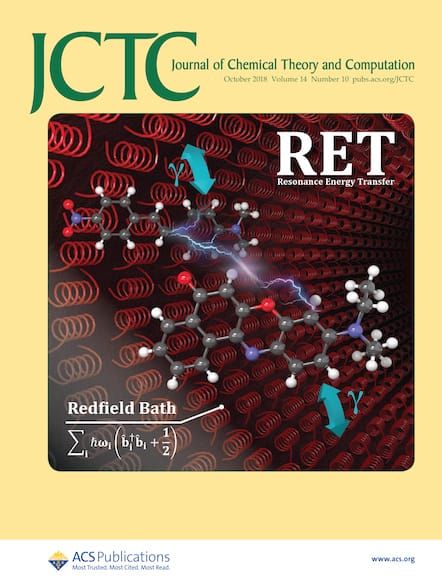Assessment of RNA Force Fields for Dynamic Docking of Small Molecules Using Multicanonical MD Simulations.
IF 5.5
1区 化学
Q2 CHEMISTRY, PHYSICAL
引用次数: 0
Abstract
Molecular dynamics (MD) simulations are increasingly important for analyzing RNA-ligand interactions, particularly in the context of therapeutic development. However, the accuracy of RNA force fields remains insufficiently assessed, partly due to the limited sampling efficiency of MD approaches and the lack of reliable docking protocols. To evaluate the performance of modern AMBER-based RNA force fields, we selected four small RNA-ligand complexes from the Protein Data Bank (PDB) and executed dynamic docking simulations using one of the generalized ensemble methods, multicanonical MD, across five different force fields. We analyzed a total of 600 μs of simulation data, each reweighted to the canonical ensemble at physiological temperature. The resulting conformational ensembles varied across force fields for three of the four targets. Among the tested force fields, the parm99χOL3-vdWbb yielded the most accurate results based on our R-value analysis that measures the ligand-RNA native contacts, assuming the PDB structures represent the correct native conformations. However, further analysis revealed that some metastable, non-native RNA conformations had smaller intercalation sites with a closed binding pocket, resulting in shrinkage of the RNA molecules. These findings suggest that current RNA force fields may overstabilize non-native, closed conformations. The present simulations, methodology, analyses, and data offer valuable insights to guide the development of next-generation RNA force fields to better assess non-native RNA conformations.基于多模态动力学模拟的小分子动态对接RNA力场评估。
分子动力学(MD)模拟对于分析rna -配体相互作用越来越重要,特别是在治疗发展的背景下。然而,RNA力场的准确性仍然没有得到充分的评估,部分原因是由于MD方法的采样效率有限以及缺乏可靠的对接协议。为了评估现代基于琥珀的RNA力场的性能,我们从蛋白质数据库(PDB)中选择了四种小RNA配体复合物,并使用一种广义集成方法(多规范MD)在五种不同的力场中进行了动态对接模拟。我们分析了总共600 μs的模拟数据,每个数据都重新加权到生理温度下的正则系综。所得到的构象集合在四个目标中的三个不同的力场中有所不同。在测试的力场中,假设PDB结构代表正确的天然构象,基于我们测量配体- rna天然接触的r值分析,parm99χOL3-vdWbb产生了最准确的结果。然而,进一步的分析表明,一些亚稳态的非天然RNA构象具有较小的嵌入位点和封闭的结合袋,导致RNA分子收缩。这些发现表明,当前的RNA力场可能会过度稳定非天然的封闭构象。目前的模拟、方法、分析和数据为指导下一代RNA力场的发展提供了有价值的见解,以更好地评估非天然RNA构象。
本文章由计算机程序翻译,如有差异,请以英文原文为准。
求助全文
约1分钟内获得全文
求助全文
来源期刊

Journal of Chemical Theory and Computation
化学-物理:原子、分子和化学物理
CiteScore
9.90
自引率
16.40%
发文量
568
审稿时长
1 months
期刊介绍:
The Journal of Chemical Theory and Computation invites new and original contributions with the understanding that, if accepted, they will not be published elsewhere. Papers reporting new theories, methodology, and/or important applications in quantum electronic structure, molecular dynamics, and statistical mechanics are appropriate for submission to this Journal. Specific topics include advances in or applications of ab initio quantum mechanics, density functional theory, design and properties of new materials, surface science, Monte Carlo simulations, solvation models, QM/MM calculations, biomolecular structure prediction, and molecular dynamics in the broadest sense including gas-phase dynamics, ab initio dynamics, biomolecular dynamics, and protein folding. The Journal does not consider papers that are straightforward applications of known methods including DFT and molecular dynamics. The Journal favors submissions that include advances in theory or methodology with applications to compelling problems.
 求助内容:
求助内容: 应助结果提醒方式:
应助结果提醒方式:


